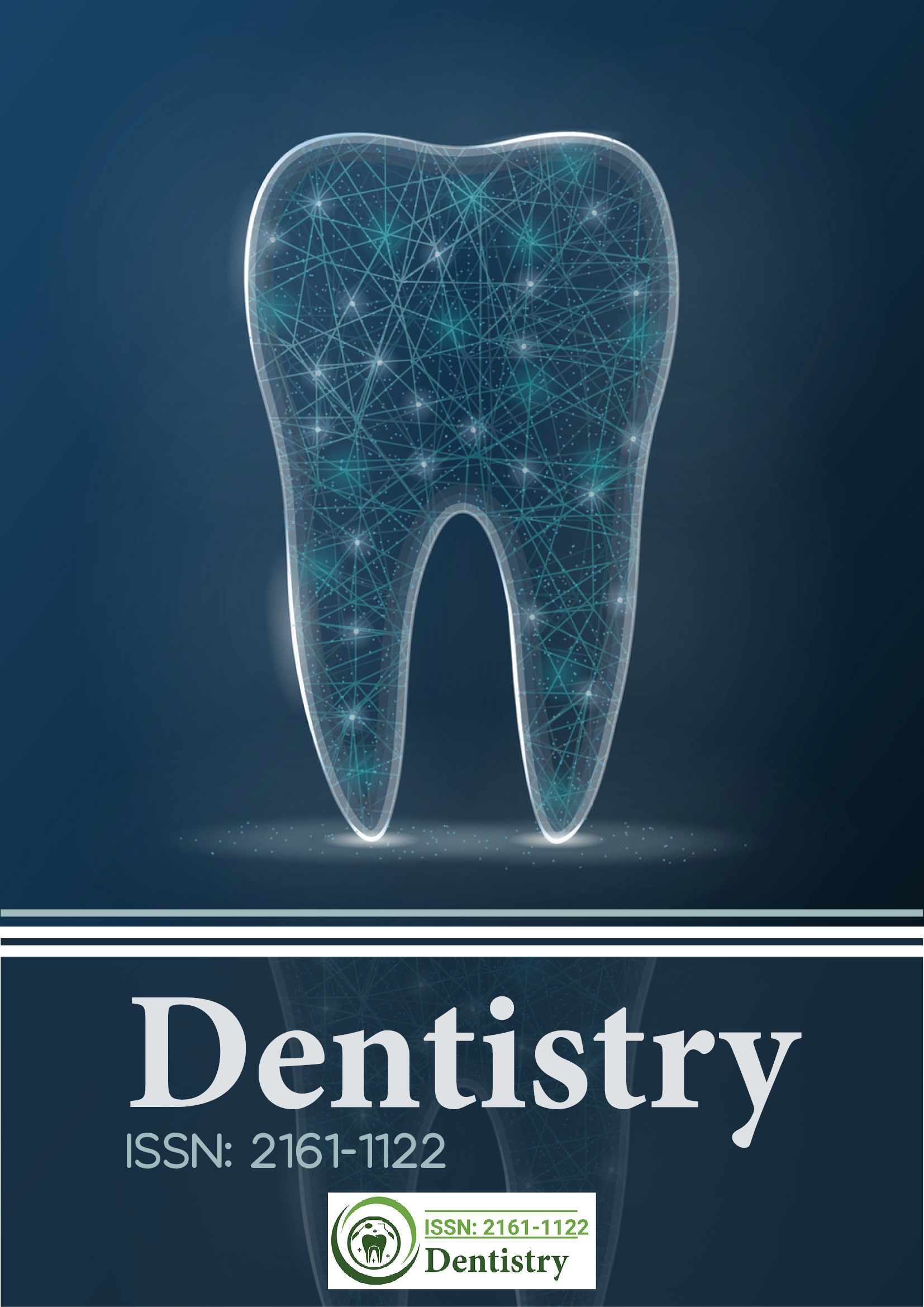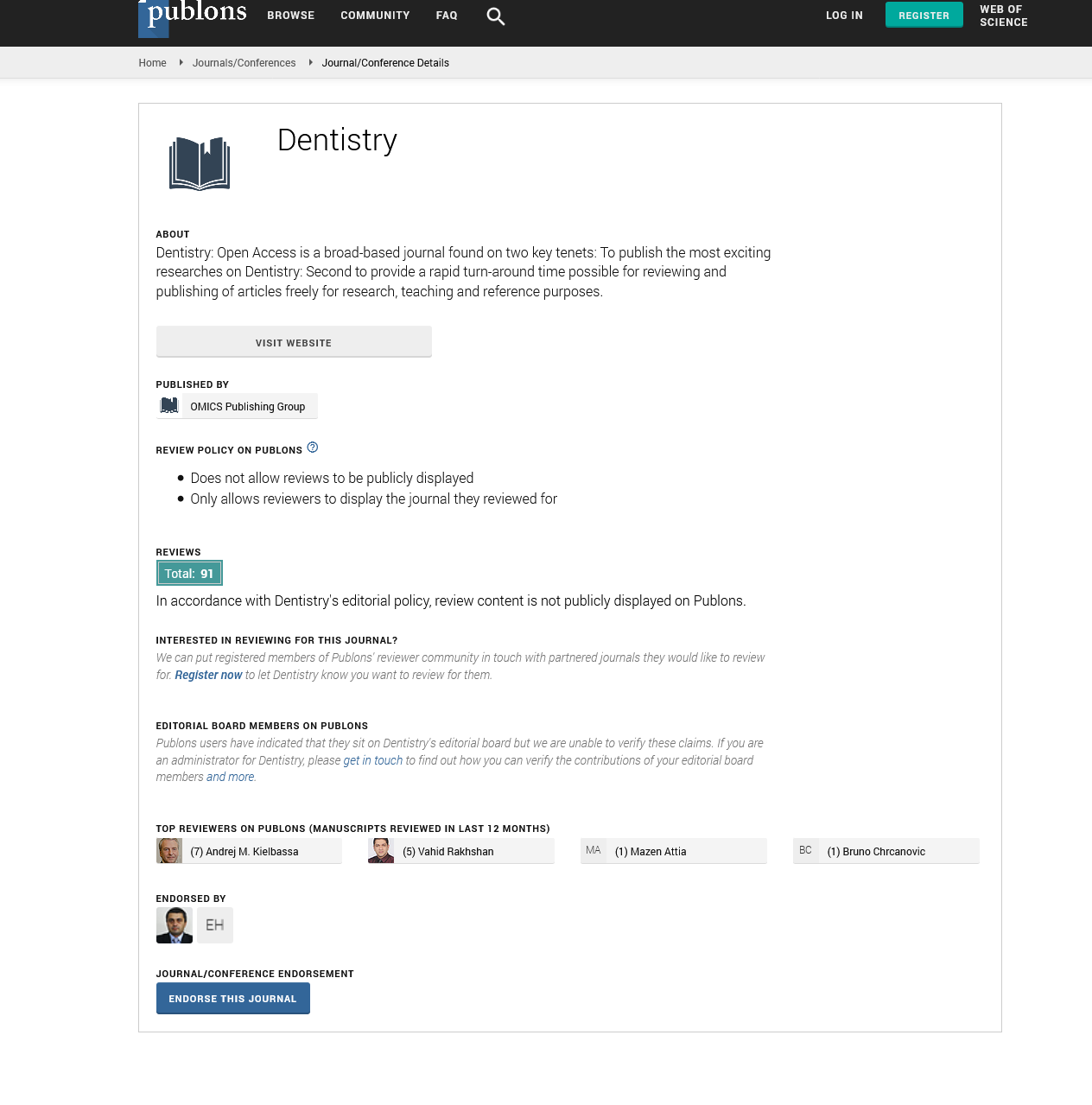Citations : 2345
Dentistry received 2345 citations as per Google Scholar report
Indexed In
- Genamics JournalSeek
- JournalTOCs
- CiteFactor
- Ulrich's Periodicals Directory
- RefSeek
- Hamdard University
- EBSCO A-Z
- Directory of Abstract Indexing for Journals
- OCLC- WorldCat
- Publons
- Geneva Foundation for Medical Education and Research
- Euro Pub
- Google Scholar
Useful Links
Share This Page
Journal Flyer

Open Access Journals
- Agri and Aquaculture
- Biochemistry
- Bioinformatics & Systems Biology
- Business & Management
- Chemistry
- Clinical Sciences
- Engineering
- Food & Nutrition
- General Science
- Genetics & Molecular Biology
- Immunology & Microbiology
- Medical Sciences
- Neuroscience & Psychology
- Nursing & Health Care
- Pharmaceutical Sciences
Vasodilatory effect of hydroxyethyl methacrylate and triethylene glycol dimethacrylate in rat aorta through calcium antagonistic action
19th American Dental Congress
December 08-10, 2016 Phoenix, USA
Oguzhan Yildiz
Gulhane School of Medicine, Turkey
Posters & Accepted Abstracts: Dentistry
Abstract:
Resin-based dental materials contain various diluent monomers that can interfere with vascular function by causing vasodilation. In this study, we evaluated the vasoactive potential of hydroxyethyl methacrylate (HEMA) and triethylene glycol dimethacrylate (TEGDMA), and the possible mechanism of their vascular action on isolated rat aorta. Responses of thoracic aorta rings were recorded isometrically by using force displacement transducers. After pre-contracting aorta rings with phenylephrine, relaxations to HEMA and TEGDMA were recorded in the absence and presence of nitric oxide synthase inhibitor NĪ?-nitro-L-arginine methyl ester, cyclooxygenase inhibitor indomethacin and K+ channel inhibitors: tetraethylammonium, glibenclamide and 4-aminopyridine. To investigate the Ca2+-channel antagonistic effect of HEMA and TEGDMA in different aorta rings, concentration-response curves to CaCl2 were obtained in the absence and presence of the test monomers. Both HEMA and TEGDMA elicited concentrationdependent relaxations. The vasorelaxant effect of HEMA and TEGDMA was not mediated via endothelium-dependent NO and prostanoid-dependent mechanisms, or by K+ efflux through K+ channels. Both monomers significantly inhibited the contractions induced by CaCl2. Our results show that HEMA and TEGDMA induce vasodilation via Ca2+-antagonistic action, while NO and cyclo-oxgenase pathway and K+ channels were not responsible for this vasoactive effect.
Biography :
Email: oyildiz@gata.edu.tr

